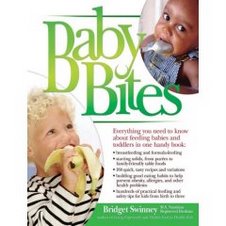

Milk is generally the number one calcium source for kids--and teens. But what if your kid is vegetarian; two of every 100 older kids in the US is. Not to worry--there are plenty of vegetarian sources of calcium that are absorbed as well or better than milk.
Greens that are low in oxalate (bok choy, broccoli, Chinese/Napa cabbage, collards, kale, okra, turnip greens) provide calcium that is highly bioavailable to the body for absorption (49% to 61%), in comparison with calcium-set tofu, fortified fruit juices, and cow’s milk (bioavailability in the range of 31% to 32%) and with fortified soymilk, sesame seeds, almonds, and red and white beans (bioavailability of 21% to 24%)
On the other hand, oxalates present in some foods can greatly reduce calcium absorption, so vegetables that are very high in these compounds, such as spinach, beet greens, and Swiss
chard, are not good sources of usable calcium despite their high calcium content.
The following list shows vegetarian as well as dairy sources of calcium, for comparison.
The Dietary Reference Intake for Calcium (the amount of daily calcium that should be consumed) for kids is:
Children 1-3 years: 500 mg
Children 4-8 years: 800 mg
Children 9-18: 1300 mg
Soyfoods
Cultured soy yogurt, fortified, 1/2 c (125 mL) 367 mg
Soybeans, cooked, 1/2 c (125 mL) 88 mg
Soybeans, dry roasted, (soy nuts), 1/4 c (60 mL) 60 mg
Soybeans, green, 1/2 c (125 mL) 130 mg
Soymilk, fortified, 1/2 c (125 mL) 100-159 mg
Tofu, firm, calcium-set, 1/2 c (126 g) 120-430 mg
Tempeh, 1/2 c (83 g) 92 mg
Legumes (cooked, 1/2 c/125 mL)
Black beans 46 mg
Chickpeas, garbanzo beans 40 mg
Great northern or navy beans 60-64 mg
Pinto beans 41 mg
Vegetarian baked beans 64 mg
Nuts, seeds and their butters mg
Almonds, 1/4 c (60 mL) 88 mg
Almond butter, 2 tbsp (30 mL) 86 mg
Sesame tahini, 2 tbsp (30 mL) 128 mg
Breads, cereals, and grains
Cereal, ready-to-eat, fortified, 1 oz (28 g) 55-315 mg
Fruits
Figs, dried, 5 -137 mg
Orange, 1 large 74
Orange juice, fortified, 1/2 c (125 mL) 150 mg
Vegetables (cooked, 1 c/250 mL)
Bok choy (Chinese cabbage, pak choi) 167-188 mg
Broccoli 79 mg
Collard greens 239 mg
Kale 99 mg
Kale, Scotch 181 mg
Mustard greens 109 mg
Okra 107 mg
Turnip greens 206 mg
Other foods
Blackstrap molasses, 1 tbsp (15 mL) 172 mg
Dairy products
Cow’s milk, 1/2 c (125 mL) 137-158
Cheddar cheese, 3/4 oz (21 g) 153
Yogurt, plain, 1/2 c (125 mL) 137-230
Dairy products
Cow’s milk, 1/2 c (125 mL) 137-158
Cheddar cheese, 3/4 oz (21 g) 153
Yogurt, plain, 1/2 c (125 mL) 137-230
Bok choy (Chinese cabbage, pak choi) 167-188 mg
Broccoli 79 mg
Collard greens 239 mg
Kale 99 mg
Kale, Scotch 181 mg
Mustard greens 109 mg
Okra 107 mg
Turnip greens 206 mg
Other foods
Blackstrap molasses, 1 tbsp (15 mL) 172 mg
Dairy products
Cow’s milk, 1/2 c (125 mL) 137-158
Cheddar cheese, 3/4 oz (21 g) 153
Yogurt, plain, 1/2 c (125 mL) 137-230
Dairy products
Cow’s milk, 1/2 c (125 mL) 137-158
Cheddar cheese, 3/4 oz (21 g) 153
Yogurt, plain, 1/2 c (125 mL) 137-230
Source: Position Paper of the American Dietetic Association and Dietitians of Canada: Vegetarian Diets, Journal of the American Dietetic Association. 2003 Volume 103, No 6








